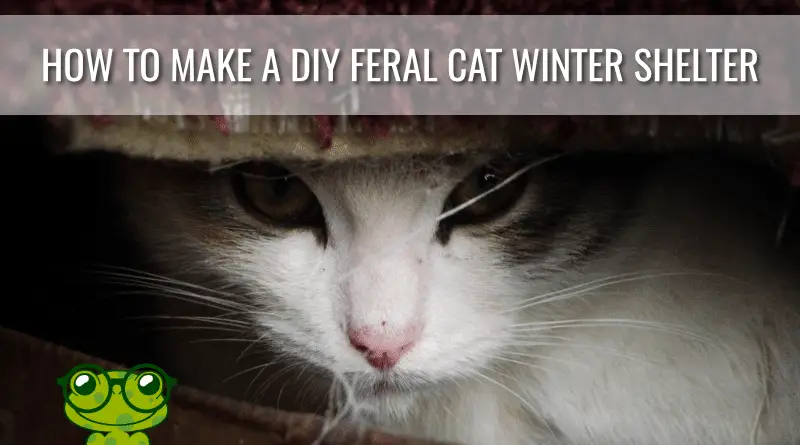Last modified on February 16th, 2022 at 7:00 pm
How To Make A DIY Feral Cat Winter Shelter
Making a DIY feral cat winter shelter is an easy project and simple to make. You probably have the majority of the items around your house already.
There are many different ways to create cat shelters, and they can be easy or complicated.
You can make a shelter that requires the use of tools and some building skills, or you can make a shelter that does not involve any construction knowledge.
We have chosen a DIY feral cat winter shelter that is easy to put together, a project that you can involve the kids in, and one that needed supplies are readily available.
How To Put Together A DIY Feral Cat Winter Shelter
Supplies Needed:
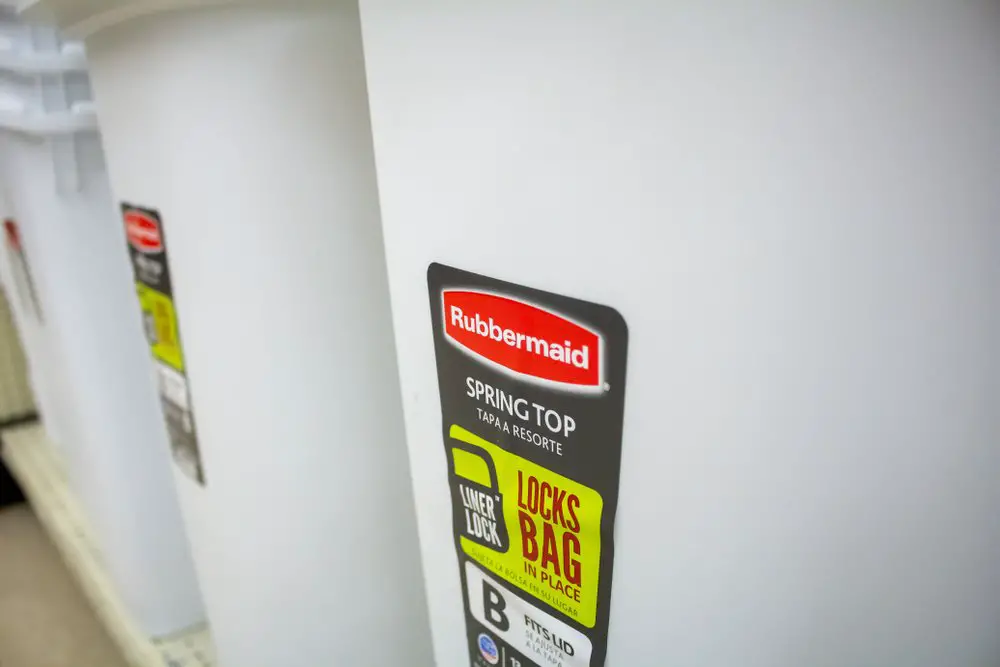
Tote:
Use a Rubbermaid-type storage container with a lid.
Use an 18 gallon or larger, but not too large.
Get a container that is a darker color, like earth tones.
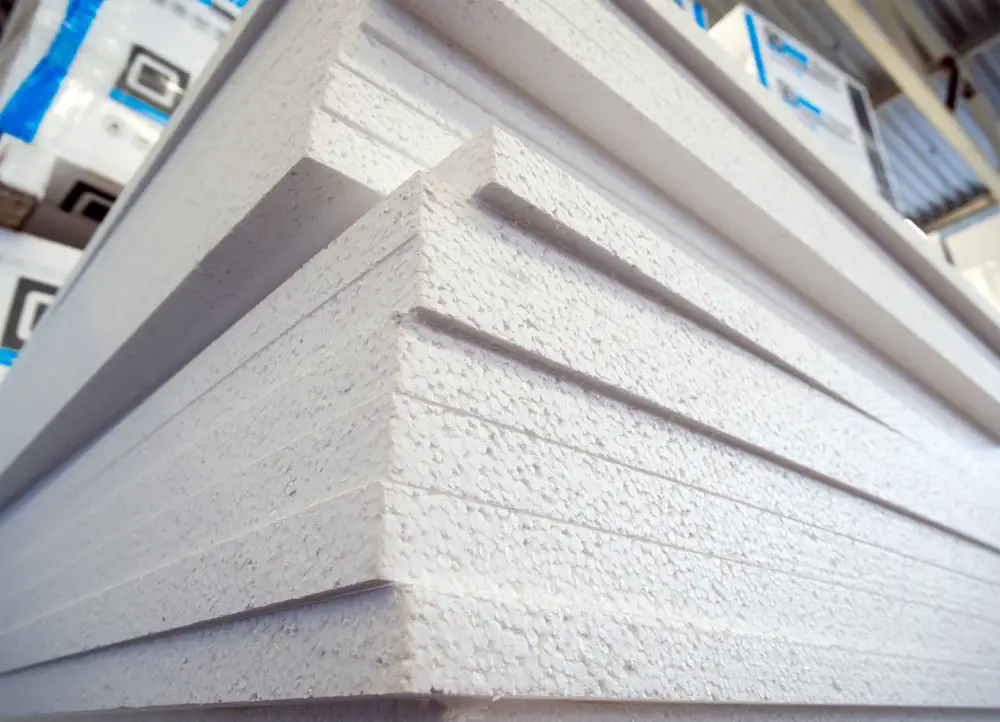
Reflectix or Foam board insulation: Purchase at a home improvement store, like Lowe’s or Home Depot.
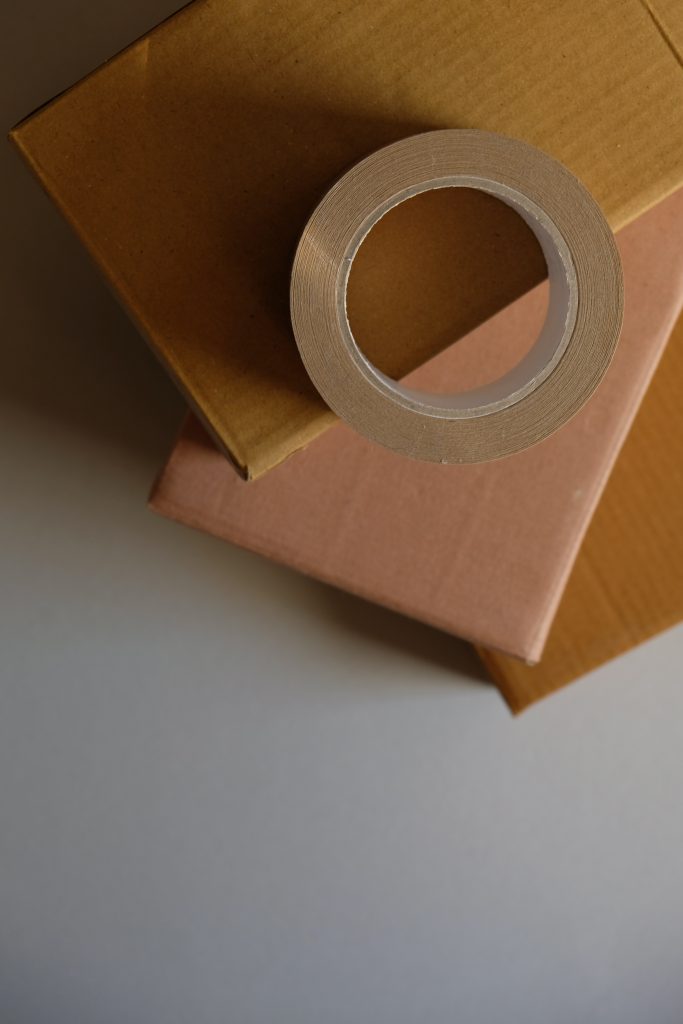
Duct or Gorilla Tape: Home improvement stores, hardware, and big-box stores will carry both types of this tape.

Box Cutter, Scissors

Sharpie

Hairdryer
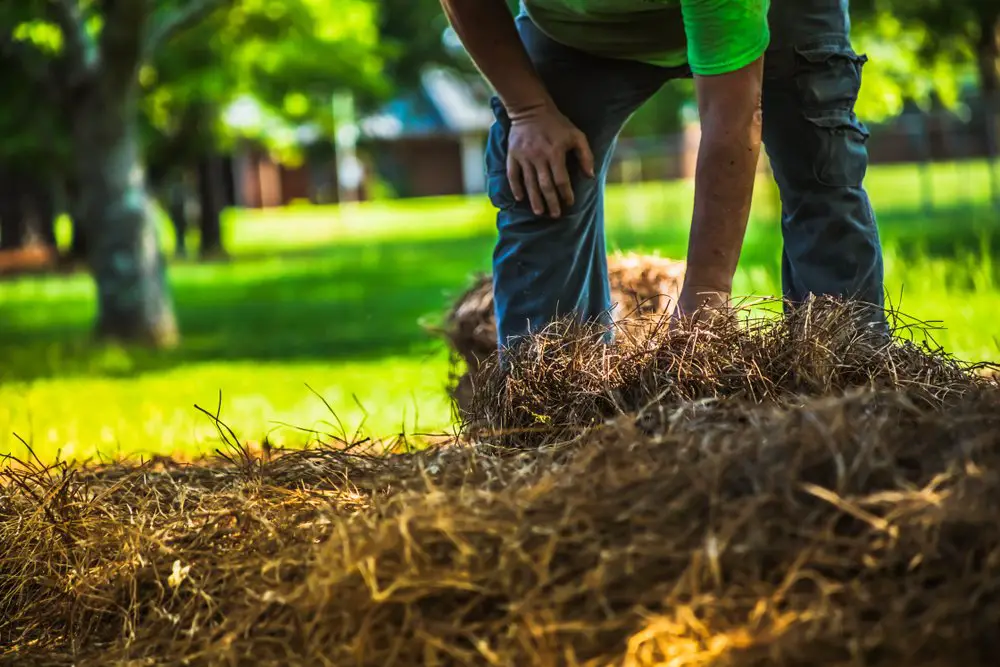
Bedding Material: Straw or Natural Bedding. Pet supplies or feed stores carry these items.
Directions For Making The DIY Feral Cat Shelter:
- With the Sharpie, trace a five-inch square as an entry point on your container.
- Decide beforehand where you will be placing the container outside to know whether the entry should be on the long side of the container, or on the short end.
- Use the hairdryer on the outside of the container to warm up the plastic. This will make it easier to cut through the container.
- While the plastic is still warm, use the box cutter and cut out the entry’s two sides and bottom. Do not cut the top, as this will be used to create a flap.
- Fold the flap upward to create the space for the cat to get under. If the material is too stiff to allow for this flexibility, then cut the flap out completely. Use the duct tape to tape this flap to the container. Cut the flap slightly smaller so that the cat can move it aside to gain entry.
- Use the box cutter to cut the foam board to the right size for the container’s interior. Cut pieces for the bottom, each of the four sides, and a piece for the top.
- For added insulation, cut the Reflectix insulation and use it to line the storage container and the inside of the lid. Use the duct tape to secure the Reflectix insulation and create corners that hold the foam board insulation.
- If you have chosen to use it, place the Reflectix insulation in the container and then the foam board pieces on top.
- Where the entryway is located, cut out the insulation, and use duct tape to secure the entrance’s insulation. Make sure that you have no sharp edges created with the tape.
- When you have the insulation in place, add the straw or natural bedding to the bottom of the container.
- Put the foam piece on the top and then the lid in place and secure with some tape. Don’t tape the lid down completely, as you will need to get inside to add clean bedding on occasion.
- Place the shelter outside in a sheltered location and keep it off the ground by setting it on two by fours or other building material.
- Place a heavy object on top to anchor the container in place.
- Check your feral cat shelter periodically to make sure it is in place and has clean bedding.
Essential Tips About DIY Feral Cat Winter Shelters
Shelter size:
When making a shelter, you do not want to make it too big. The insulation inside the shelter will help to trap heat inside, but it will be the cat that is generating the heat.
If the shelter is too large, it will not be effective in trapping the heat. The less air space in the shelter, the less space the cat’s body will need to heat.
Make the shelter large enough for just one or two cats. If you have more than one or two feral cats that need shelter, consider making more than one shelter.
Insulation:
Insulating the inside of the shelter is vital, as it will help trap the heat that the cat generates. The stiff type of insulation in a white foam type board is perfect for cutting and lining the shelter.
If there is no insulation in the shelter, it will be next to impossible for the cat to remain warm. The bedding material that you use on top of the styrofoam flooring should be the type that a cat can burrow into.
It is tempting to use an old blanket or towel, but that is not the best choice. Blankets and towels retain moisture and absorb body heat.
Any snow that is brought in by the cat will make the bedding wet and cold. The best insulator for this area is straw or natural bedding that you get from a pet store.
Straw (never hay) will absorb moisture and is resistant to mold and rot. Local pet and feed stores, as a rule, will carry bales of straw.
Placement of your cat shelter:
It is best not to place your shelter directly on the ground. Instead, put it on top of a couple of two by fours, or anything else that you have to raise the shelter off the ground by a few inches.
If you use two by fours, place some of the straw underneath as additional insulation.
If you have a fenced yard, place the shelter behind the fenced area so that predators like dogs can’t get to the shelter.
Have the shelter face the fence or the wall of a garage so that only a cat can get in and out. If at all possible, keep the shelter out of sight. This gives the cat added protection.
Take care of the size and placement of the door to the shelter:
The opening for the cat shelter needs to be only about five and a half inches in diameter. All a cat needs is the width of their whiskers to get into an opening.
With a smaller door, larger animals might be discouraged from entering. The smaller opening will keep more heat indoor, too.
Keep the entrance several inches above the ground. That will keep the rain from running into the entrance. Snow is less likely to get into the shelter if the entrance is above the ground.
It would be a good idea to include some type of awning over the entry door if you can. Use heavy-duty plastic, canvas, or other material.
It will help keep the rain and snow from entering the shelter and keep the cat feeling safer when they are in the shelter.
Anchor the shelter against the wind:
If you have built your cat shelter out of building materials like wood, it will probably be sturdy enough to withstand the winter winds that can be pretty fierce.
If you are using more light-weight materials, you may need to anchor your shelter. You can add barbell weights under the insulation in the shelter.
You could also place pavers, brick, or rocks on the top of your shelter. Try to position your shelter out of the wind and in an area that has some natural windbreak.
In Conclusion
Your love for cats can be directed to give comfort and shelter to the feral cats in your neighborhood.
Constructing a DIY feral cat winter shelter will provide them with much-needed relief during the cold months.
It is a simple DIY project that take a minimum of time and effort and brings safety and warmth to needy feral cats.

